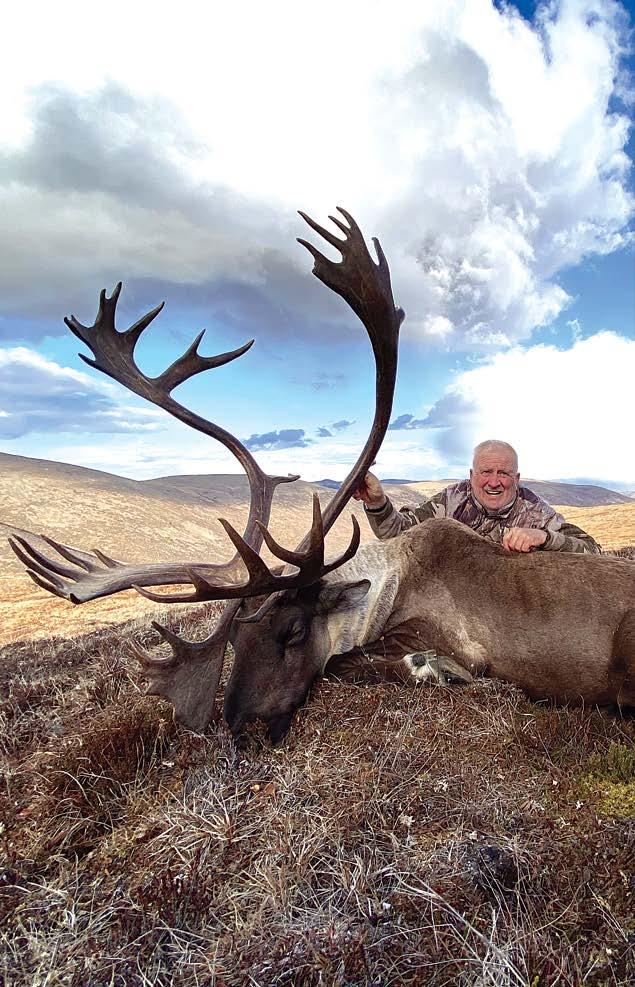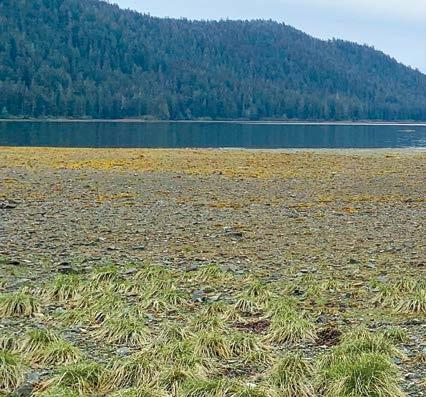
6 minute read
SINCE 1887 - MEMBER BIOGRAPHIES GIFFORD PINCHOT
Since 1887 KENDALL HOXSEY-ONYSKO B&C REGULAR MEMBER AND HISTORY LIAISON MEMBER BIOGRAPHIES
GIFFORD PINCHOT
Advertisement
HIS LEGACY OF WISE USE — 8/11/1865 - 10/4/1946
Not many people have varied lives that rival someone like Theodore Roosevelt, but in many ways T.R.’s mentee Gifford Pinchot comes close. T.R. wrote in his autobiography, “Gifford Pinchot is the man to whom the nation owes most for what has been accomplished as regards to the preservation of the natural resources of our country.”
Born in 1865 right after the Civil War, Pinchot grew up an avid outdoorsman. Born into wealth and privilege, his grandfather, Cyrille Pinchot, made millions as a lumberman, in addition to his merchant father, James Pinchot, and heiress mother, Mary Eno. A young Pinchot was known as gregarious, amiable, and confident. Spending most of his time in New York City and Connecticut among the Eastern upper class, Pinchot was expected to achieve great success in business as well as
Gifford Pinchot, center, with a group of forestry officials and rangers on a timber marking operation in the Absaroka Division of the Yellowstone Forest Reserve in 1906.
civil leadership. It was on summer holiday trips to the Adirondacks that exposed him to the natural beauty of the outdoors. Pinchot attended Yale University from 1885 to 1889 intending to begin his education as a forester. At the time, Americans had not even begun to think about forest management. European forestry protocols and teachers were finding their way to a few select American institutions. As a result, Pinchot continued forestry training in Nancy, France. For his 21st birthday, his parents presented him the 1882 edition of George Perkins Marsh’s, The Earth as Modified by Human Action. Marsh made the connection that environmental despoliation had been the reason for the collapse of once great civilizations. This thesis became one of the cornerstones of Pinchot’s life and further fueled his enthusiasm for forestry. After returning from France, his first job was forest manager at George Vanderbilt’s Biltmore Estate in North Carolina in 1892. It was here that Pinchot implied that active management of forest could improve wildlife range and protection for watersheds and provide sustained crops of commercial timber indefinitely. Pinchot’s three cornerstones of leadership were efficiency, rational planning, and scientific management. In 1898 Pinchot became the fourth chief of the Division of Forestry in the U.S. Department of Agriculture under President McKinley. In this role Pinchot regulated grazing, logging, and mining. At this time Pinchot joined the Geological Survey as a committee member, along with Arnold Hague— both members of the Boone and Crockett Club. Their method of forest management had the support of B&C. Most B&C members at this point in
were Easterners. Western settlers wanted the government to abandon forest reserves. Pinchot spent part of 1898 touring western states to learn about the great forest reserves and problems involved in their protection. Pinchot founded the Society of American Foresters in 1900. Hague and Theodore Roosevelt were named charter associate members. The society’s first goal was to normalize the profession of forester. Pursuing that mission, the Pinchot family endowed a two-year graduate level school of forestry, which is now known as The Forest School at the Yale School of the Environment. Before the creation of the Forest Service, administration of the forest reserves resided under the Department of the Interior, and the Division of Forestry was under the Secretary of Agriculture. With support from the Society of American Foresters, B&C, and the American Forestry Association, Pinchot pushed to unite all forest management under the Department of Agriculture. In 1902, President Roosevelt appointed Pinchot as special agent and forester in the Department of the Interior while retaining him as forester in the Department of Agriculture. For the first time, one individual managed forest reserves and the Division of Forestry. The Transfer Act of 1905 established the United States Forest Service on July 1, 1905, and 56 million acres of open land as national forests. In addition, the legislation authorized all employees of the Forest Service to make arrests for violations of laws and regulations relating to national forests. Pinchot and Roosevelt increased the National Forest System to 172 million acres in 1909. During Roosevelt’s presidency, Pinchot worked with T.R.’s core group of federal scientists and bureaucrats to devise and implement an aggressive conservation agenda, which included establishing five more national parks and 18 national monuments, including the Grand Canyon. Before 1907 there was no established word for the type of conservation practiced by Pinchot and Roosevelt. No single word to describe interrelationship and sustained-yield use of forests, soils, waters, fish, wildlife, minerals, and all other natural resources. Conservation, according to Pinchot and Roosevelt, was the prudent use of natural resources without waste, tempered by reason and consideration of the basic supply. It implied the restoration or expansion of renewable natural resources and the protection of reserves as a hedge against unprecedented demand. Pinchot argued that users of publicly

At Gifford Pinchot's urging, President Roosevelt invited representatives from Canada and Mexico to the North American Conservation Conference to "consider mutual interests involved in the conservation of natural resources." Miguel Quevedo is second from right, and Gifford Pinchot is seated at center.
owned resources should pay for their privilege, which meant fees for cattle, sheep, or other livestock grazing on national forest rangelands. Timber sales were also regulated and supervised by forest rangers. Contrarily, preservation implied non-use of resources—a concept that infuriated Pinchot. At one point Pinchot and John Muir were friends, but disagreements between the type of forest management each sought severed the relationship forever. Pragmatic conservation held to the philosophy that sustained-yield forests, with properly controlled use, could also pay dividends in watershed protection, wildlife habitat, recreation, and other public values. The idea of preservation for the sake of wilderness or scenery was considered mismanagement and unacceptable to Pinchot. These attitudes won him no friends as it upset preservationists who wanted to leave the forests untouched. Pinchot’s vision also angered western citizens and settlers who wanted no management of natural resources. The Ballinger-Pinchot Affair, a dispute between Pinchot and Secretary of the Interior Richard A. Ballinger, caused President Taft to dismiss Pinchot in 1910 for insubordination. The affair also contributed to the split of the Republican party before the 1912 presidential election. Pinchot and many other Roosevelt followers joined the Progressive, or Bull Moose Party. Pinchot saw the progressive movement as equal opportunity for all and special privilege for none. Though the Progressive party lost steam after losing the 1912 election, Pinchot used this mindset in future political roles. During the 1912 presidential campaign, he met his future wife Cornelia Bryce, noted feminist and suffragist. Their son Gifford Bryce Pinchot was born in 1915, and he went on to found the Natural Resources Defense Council. After the birth of his son, Pinchot joined the Pennsylvania forestry division in 1920 where he served as chief. In 1922, he won the state’s gubernatorial election. Focusing on leadership of a state rather than a government organization, Pinchot supported the Eighteenth Amendment, women’s suffrage, and workers’ rights. Pinchot placed great emphasis on protection and preservation of human life, which led to strict enforcement of prohibition during his first term as governor (1923-1927). Pinchot and Cornelia were staunch defenders of the political rights of the working class and equal pay for equal work for both men and women. During the Great Depression, they supported many of the New Deal policies under President Franklin Roosevelt, including work relief camps. After Congress passed the Twenty-first Amendment, Pinchot helped establish the Pennsylvania Liquor Control Board, “to discourage the purchase of alcoholic beverages by making it inconvenient and expensive.” Pinchot retired from public life in 1938 after losing Pennsylvania senatorial races and a presidential bid in 1924. He passed away in October 1946 just after the end of World War II. Cornelia said it best at the dedication of the Gifford Pinchot National Forest in 1949. “[Gifford] insisted that conservation must be invigorated, revived, remanned, revitalized by each successive generation, its implications, its urgencies, its logistics translated in terms of the present of each of them.” n









